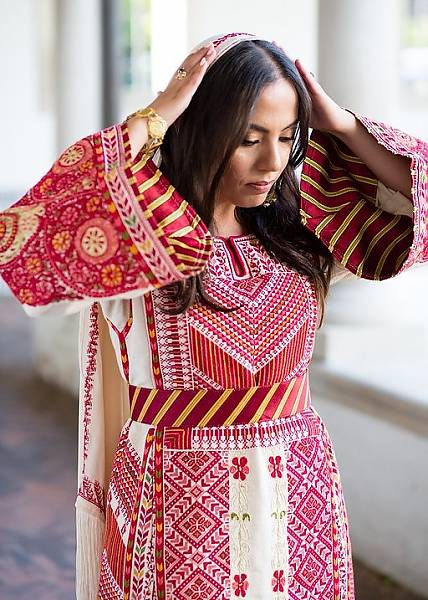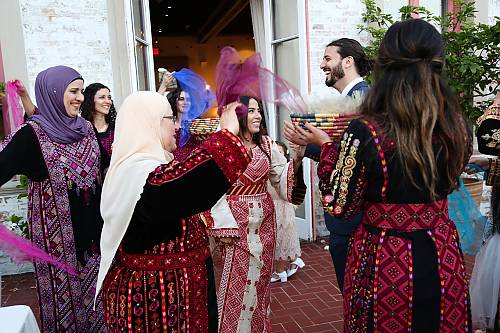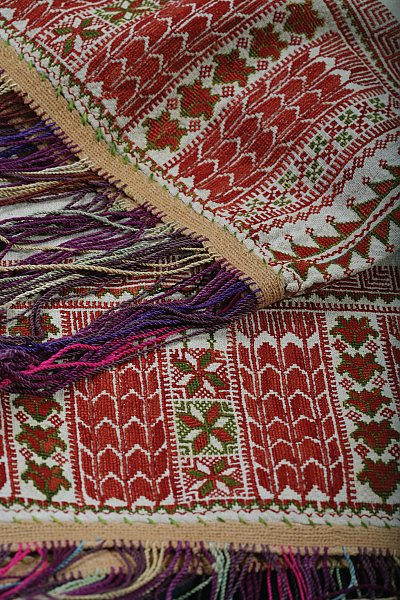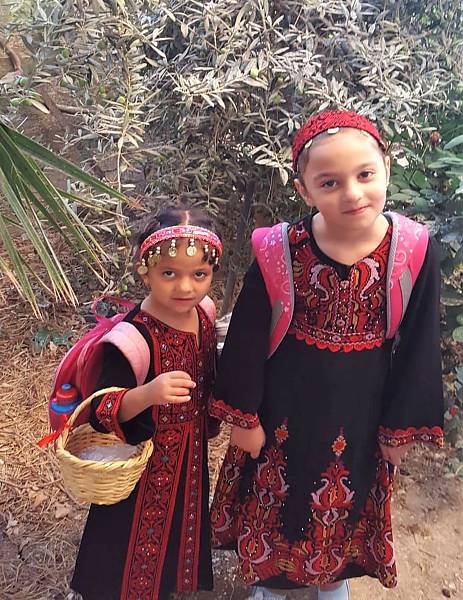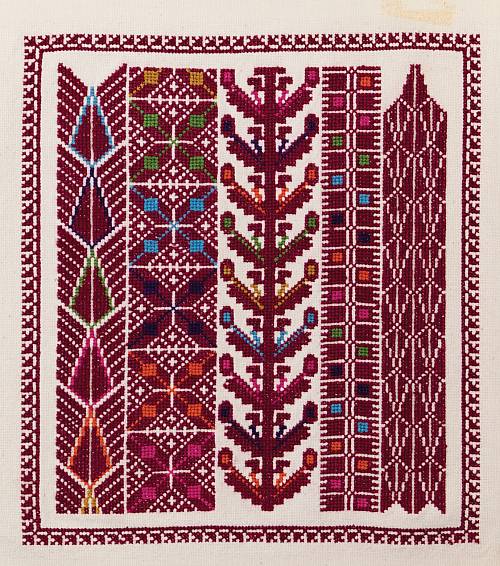The art of embroidery in Palestine, practices, skills, knowledge and rituals
Inscribed in 2021 (16.COM) on the Representative List of the Intangible Cultural Heritage of Humanity

The art of traditional embroidery is widespread in Palestine. Originally made and worn in rural areas, the practice is now common in all of Palestine and among members of the diaspora. Women’s village clothing usually consists of a long dress, trousers, a jacket, a headdress and a veil. Each of these garments is embroidered with a variety of symbols including birds, trees and flowers. The choice of colours and designs indicates the woman’s regional identity and marital and economic status. On the main garment, the loose-fitting dress called a thob, the chest, sleeves and cuffs are covered with embroidery. Embroidered, vertical panels run down the dress from the waist. The embroidery is sewn with silk thread on wool, linen or cotton. Embroidery is a social and intergenerational practice, as women gather in each other’s homes to practise embroidery and sewing, often with their daughters. Many women embroider as a hobby, and some produce and sell embroidered pieces to supplement their family’s income, either on their own or in collaboration with other women. These groups gather in each other’s homes or in community centres, where they may also market their work. The practice is transmitted from mother to daughter and through formal training courses.
